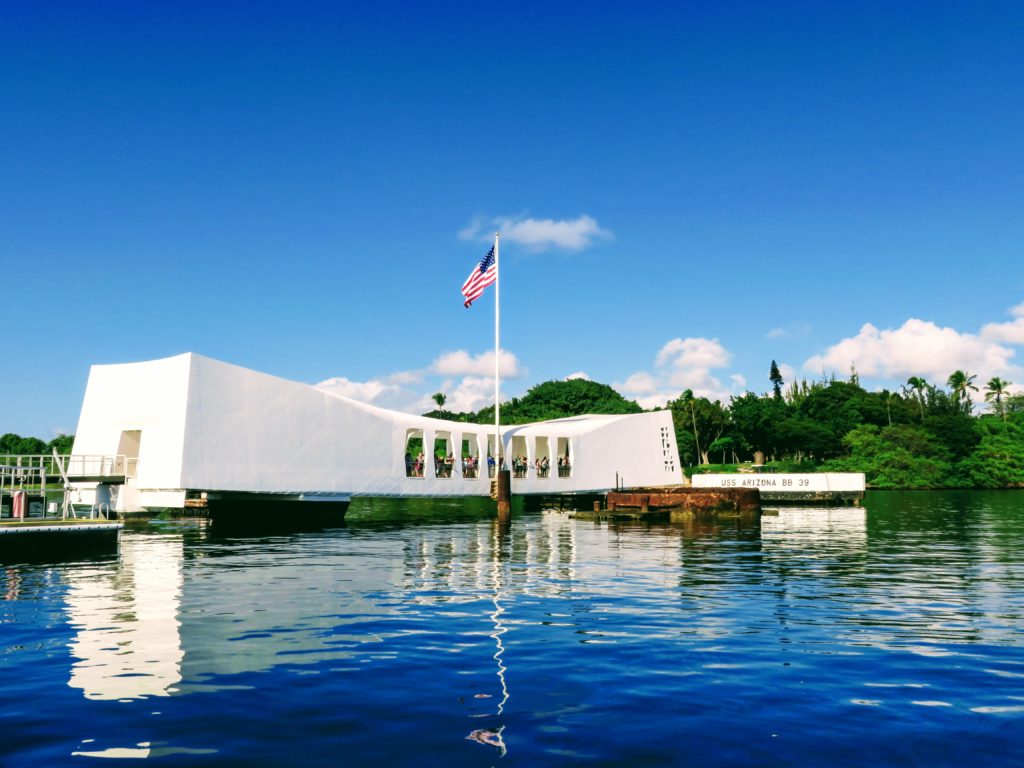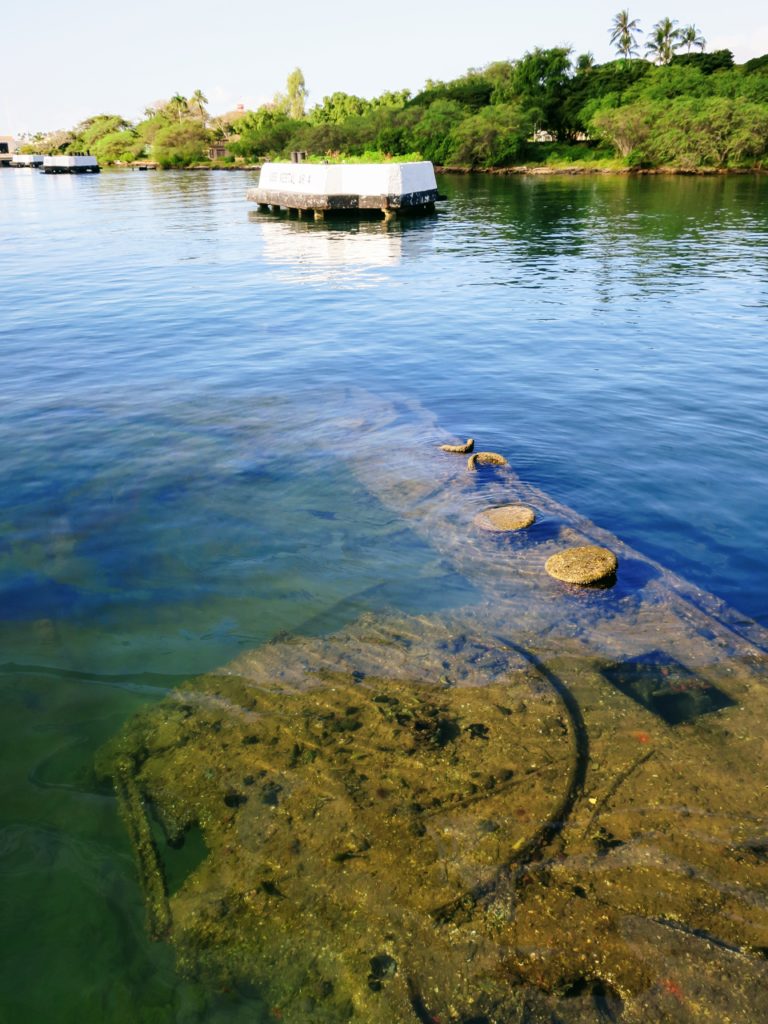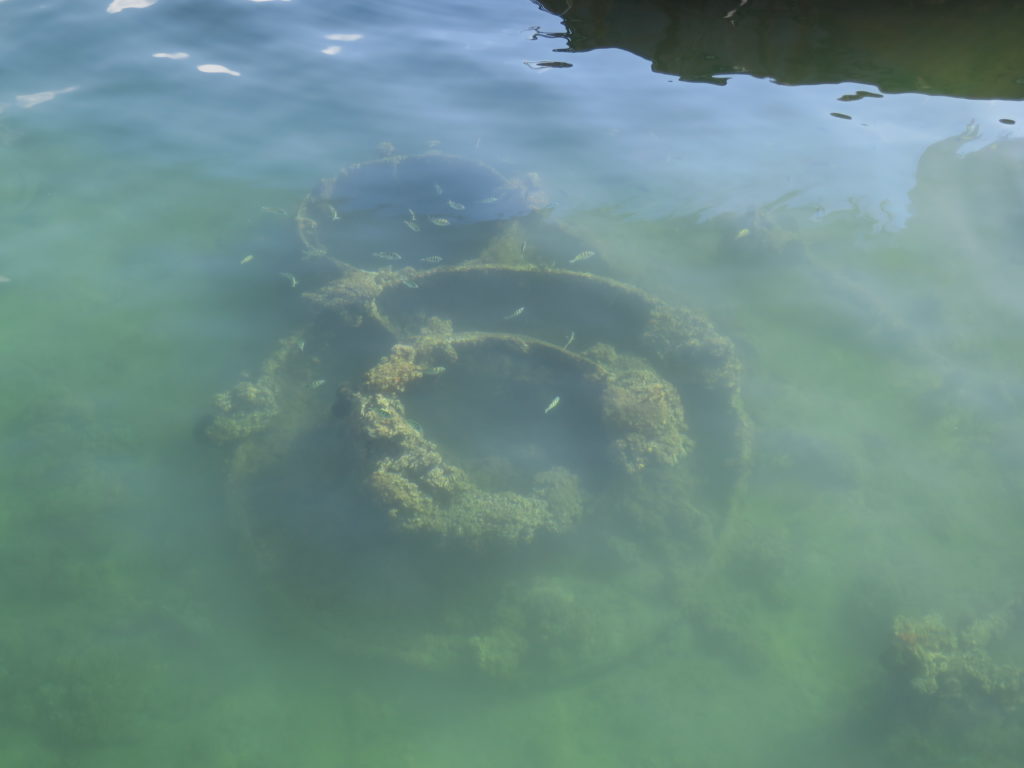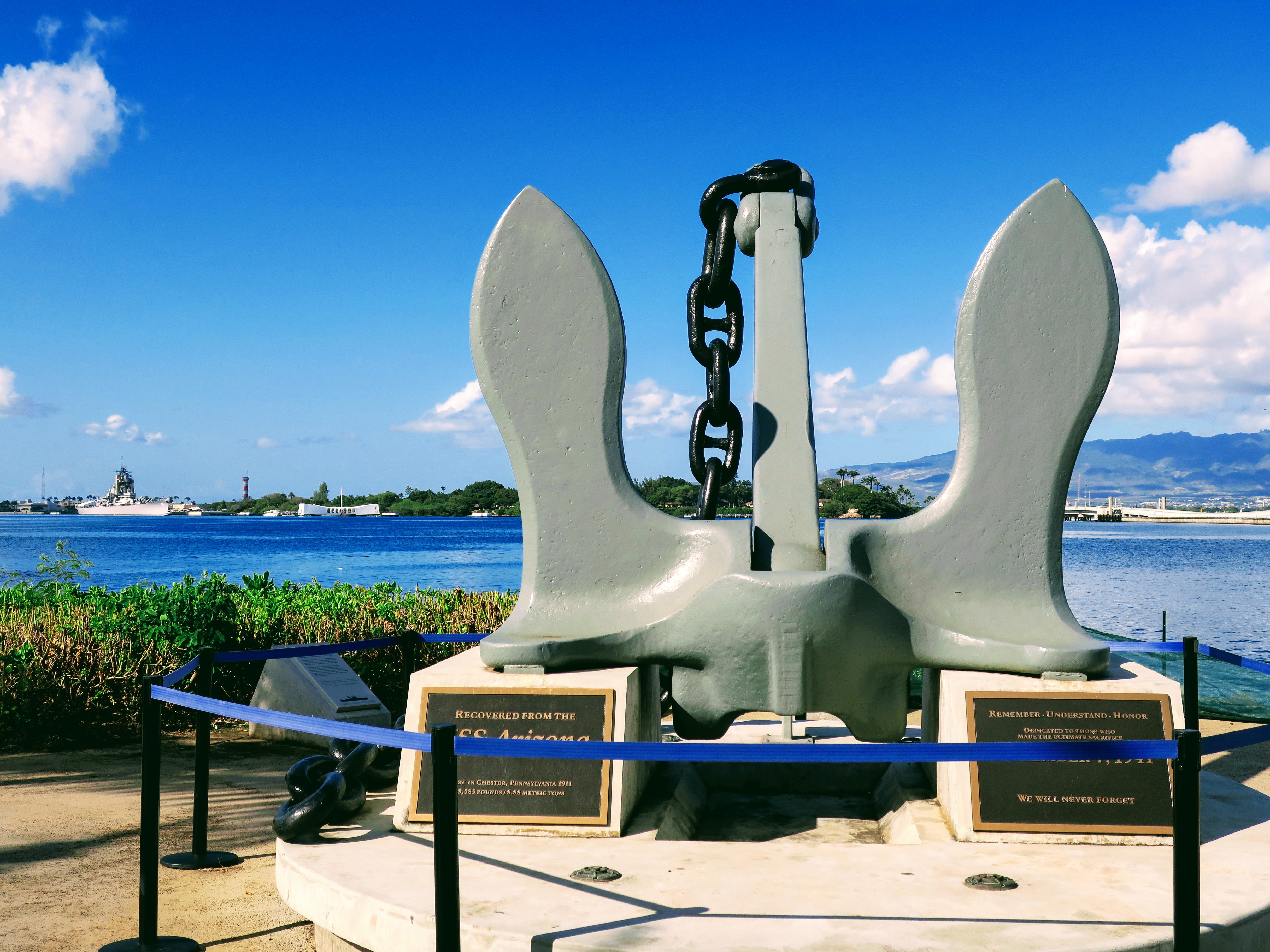Location: Pearl Harbor, U.S. Naval Base, Oahu, Hawai'i
January 17th, 2018
 December 7, 1941, 7h45am. A day like every other that came before. The sun is out, the sky is clear. There are only a few broken clouds on the horizon. It is quiet. Most are still sleeping, as is it not yet 8:00 in the morning. It’s a typical Hawaiian Sunday.
December 7, 1941, 7h45am. A day like every other that came before. The sun is out, the sky is clear. There are only a few broken clouds on the horizon. It is quiet. Most are still sleeping, as is it not yet 8:00 in the morning. It’s a typical Hawaiian Sunday.
90 seconds. That’s how long the calm will last before December 7th, 1941 is transformed into a day that will live on in history. Before lives are forever changed. Before the world is forever changed.
Anxieties are high due to the escalating tensions with Japan. There is a significant naval presence in Pearl Harbor, in anticipation of military engagement in the Pacific. Sabotage is feared. There are over 100 ships and several hundred aircrafts a various military bases on Oahu. For protection, Admiral Kimmel orders planes to be parked wingtip to wingtip and all 8 battleships to be anchored in a row. At 7:48am, the unthinkable happened.
Pearl Harbor is attacked by 353 Imperial Japanese aircrafts. They come in two waves and leave only devastation and loss behind. In an attack that barely lasted 2 hrs, 350 aircrafts were destroyed or damaged, 19 ships were sunk or damaged including all 8 battleships of the U.S. Pacific Fleet,2,403 Americans were killed and 1,178 others were wounded. On December 8th 1941, the United States of America officially enters World War II.
We are now in this war. We are all in it – all the way. Every single man, woman and child is a partner in the most tremendous undertaking of our American history
– President Franklin D. Roosevelt
 Today, Pearl Harbor is one of Hawai’i’s most visited sites. Together with other locations across California, Alaska and Hawai’i, it is part of the national monument World War II Valor in the Pacific.
Today, Pearl Harbor is one of Hawai’i’s most visited sites. Together with other locations across California, Alaska and Hawai’i, it is part of the national monument World War II Valor in the Pacific.
There are 5 sites to visit at Pearl Harbor: The USS Arizona Memorial, the USS Oklahoma Memorial, the USS Utah Memorial, as well as parts of Ford Island and Battleship Row.
Of the 8 battleships sunk or damaged during the surprise attack, all but one was raised: the USS Arizona. Six of the battleships were returned to active service and served in the ensuing war. The USS Arizona was bombed 15 minutes into the attack, and due to a powder magazine on board, it exploded violently and sank. The irreparable ship remains forever in its watery grave and is the finale resting place of the 1,177 crewman killed during the attack.

Why them and not me? – Ensign Paul H. Backus, USS Oklahoma
The USS Arizona Memorial was built directly overtop the sunken battleship. A visit to this solemn site is free and begins with a very informative and well prepared film on the Attack of Pearl Harbor. Then visitors are transported to the memorial site via a boat. The day of my visit, the sun was shining brightly, the sea was calm. I wondered if this day was not unlike that fateful morning before the attack. I couldn’t help but delight in the surroundings; Pearl Harbor was beautiful! Did the sailors feel the same way? Were some of them standing on the decks of their ships, admiring the pristine waters and soaking in the Pacific sun? The beauty of this Hawaiian bay was likely the last pleasant thing that crossed their eyes.
 The loss of life on the USS Arizona accounts for over 1/2 of all the Americans killed during the Attack on Pearl Harbor. The Memorial is built overtop the sunken ship, which is still visible in the shallow waters. Still today, the ship leaks between 2-9 quarts of oil into the ocean every day. It’s difficult to see in the photo on the right, however if you look in the bottom left corner, you’ll see the multicoloured shimmer of oil at the surface of the water near the remains of the battleship. You can definitely smell the oil, which adds to the multi-sensory experience at this solemn site (some even go as far as referring to the oil as the “tears of the Arizona,” or “black tears”).
The loss of life on the USS Arizona accounts for over 1/2 of all the Americans killed during the Attack on Pearl Harbor. The Memorial is built overtop the sunken ship, which is still visible in the shallow waters. Still today, the ship leaks between 2-9 quarts of oil into the ocean every day. It’s difficult to see in the photo on the right, however if you look in the bottom left corner, you’ll see the multicoloured shimmer of oil at the surface of the water near the remains of the battleship. You can definitely smell the oil, which adds to the multi-sensory experience at this solemn site (some even go as far as referring to the oil as the “tears of the Arizona,” or “black tears”).
As the monument site is administered by the National Park Service, there’s a park ranger available to answer questions and provide further info. One thing that stood out in particular, was that survivors of the USS Arizona have the option of being interred in the sunken ship upon their deaths. There were 334 Arizona survivors following the attack and to date, 42 sailors have chosen to rest alongside their shipmates. Today, there are only 5 remaining survivors. There’s a funeral director specifically for these ceremonies and soldiers receive full military honours.

 One of the gun turrets is visible just over the waterline. The ship sits in only 40 feet of water.
One of the gun turrets is visible just over the waterline. The ship sits in only 40 feet of water.

Another part of the Valour in the Pacific Memorial is the USS Battleship Missouri Memorial. The USS Missouri was the site of the formal end to WWII; it’s where the Supreme Commander for the Allies, General Douglas MacArthur, along with high-ranking military official of the Allied Powers (including Canada!) accepted the official surrender of the Empire of Japan. This happened in Tokyo Bay and the USS Missouri went on to serve for several years following this historic event. Its inclusion at Pearl Harbour is quite fitting; the site serves as a bookend to WWII – the attack triggered the US’s entry into the war in 1941 and the ceremony on the USS Missouri ended it in 1945. Although I chose not to tour the ship, I was still able to see the massive ship, a veritable floating historic moment.
Pearl Harbour continues to this day to be an active military base. It was quite evident on the day of my visit as military helicopters could be seen flying near the USS Missouri (see photo, above). We were also treated to a fly by of military fighter planes (my apologies to my military friends and family, I’m ignorant of the type of plane!) over the waters.
It’s quite interesting to be visiting this site in 2018. It’s a great opportunity to reflect on not only the sacrifice of men and women all over the world, but also on the enormity of the conflict itself. A power struggle between Western and Asian-Pacific countries that resulted in a shift in power at too high of a cost. Fast forward to 2018 and it seems like the world has not learned its lesson yet, with tensions (and Twitter feud) escalating across both sides of the Pacific. Let’s just hope that those in power can turn their hearts to peace and avoid repeating history’s darkest hours.
